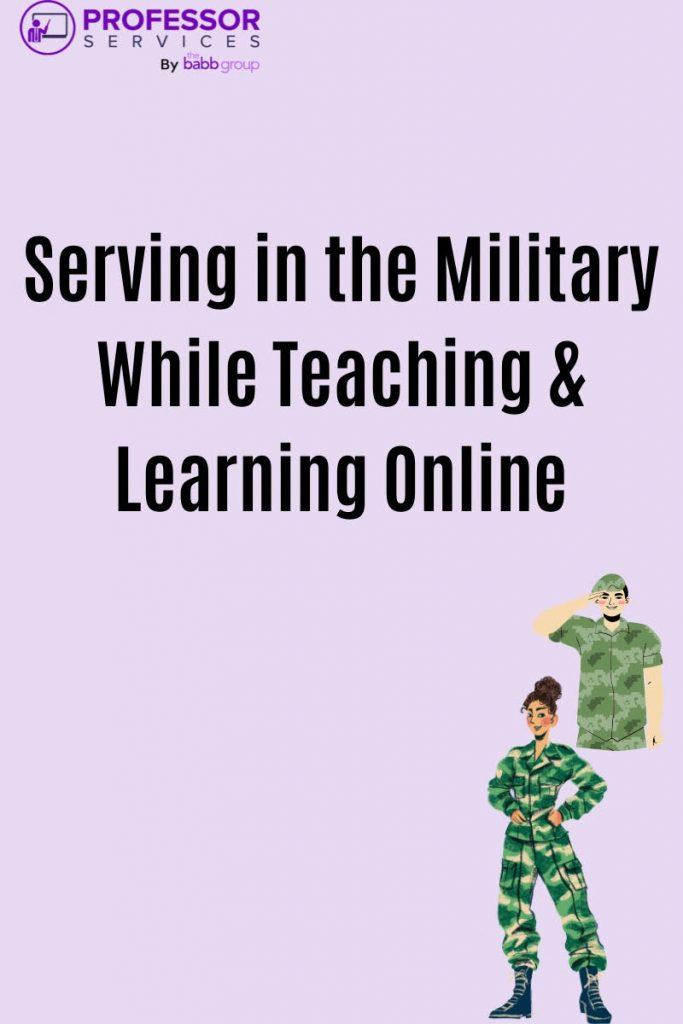“In 1985, a large-scale hypertext/hypermedia system called Intermedia allowed instructors and students to create, organize, visualize, and connect multimedia information (Talbert, 1988, p. 2.14). This system produced excellent results as both students and instructors felt a deeper understanding of the course material over a traditional linear display of text or platform recitation. Blended learning allows students the benefits of both traditional and digital learning.”
— Dr. Peggy Kenyon, US Army Training and Doctrine Command Virtual Learning.
The content team has now conducted several interviews with clients of Professor Services at The Babb Group. We use those interviews to craft the Success Story features we run to celebrate the achievements of the online instructors. If there is one lesson to be learned from all our work, it is that the US Military plays a considerable role in how online courses are created, taken, and taught.
We’ve talked to online instructors who have developed unique practices to work with deployed students who complete their coursework while abroad. We’ve talked to military spouses who teach online because they can bring their jobs with them to the next posting. We’ve also talked to instructors who are actively serving and teaching online part-time to share what they have learned. Many of them fulfilled some of their educational requirements as online students.
For Dorothy Miraglia, describing these special working conditions in cover letters and CVs are all in a day’s work. She and her team understand how crucial online teaching and learning are to those who serve.
“Military clients either make the transition in preparation for retirement from service into online teaching or are military spouses who live on military bases and want the flexibility to work at home while taking care of their families,” said our VP of Academic and Professor Services. “Those who are retired like taking their experience in training or teaching in the military and bringing it to civilian life.”
For those who have studied the development of online learning, the strong links between online teaching and learning and branches of the military will come as no surprise. The US Military was, after all, an early adopter of online or virtual learning.
Dr. Peggy Kenyon’s paper, US Army Training and Doctrine Command Virtual Learning, presents historical detail about the hardware and software army institutes of learning have been using for decades. Their existing experience made the pivot to online learning during the pandemic easier for the Army to navigate.
“As the events of this year unfolded,” Kenyon wrote about the events of 2020, “the enablers the Army already had in place became the fallback. The Army rose to the occasion. It quickly formed the professional military education/operational planning team, identified systems in place, ascertained gaps in instructor-led education and training, and found a shortfall in software application licenses. Within a few weeks, the Army VLE was fully operational.” (Kenyon, 2020)
Those virtual learning systems already in place when the pandemic struck laid the foundation for the teaching and learning environment of military personnel, and their families, for at least a generation. When it comes to finding online teaching jobs in a civilian context, military and ex-military (or military adjacent) instructors should have a competitive edge based on their earlier and more immersive exposure to the tools and techniques used in post-pandemic online learning.
If you need some assistance in outlining your professional advantages in the field of online education, please reach out Dorothy Miraglia at dorothy.miraglia@thebabbgroup.com
Latest posts by Kate Baggott (see all)
- The EdTech News for Friday, March 17, 2023: AI Supports Reading Development, Educators Detect AI-Generated School Work - March 17, 2023
- The EdTech News for Friday, March 10. 2023: Families Coding, Mindsets Changing, and Edusity is Educating - March 11, 2023
- The Hiring Manager: Human or Bot? Job Seekers Need to Know - March 9, 2023
